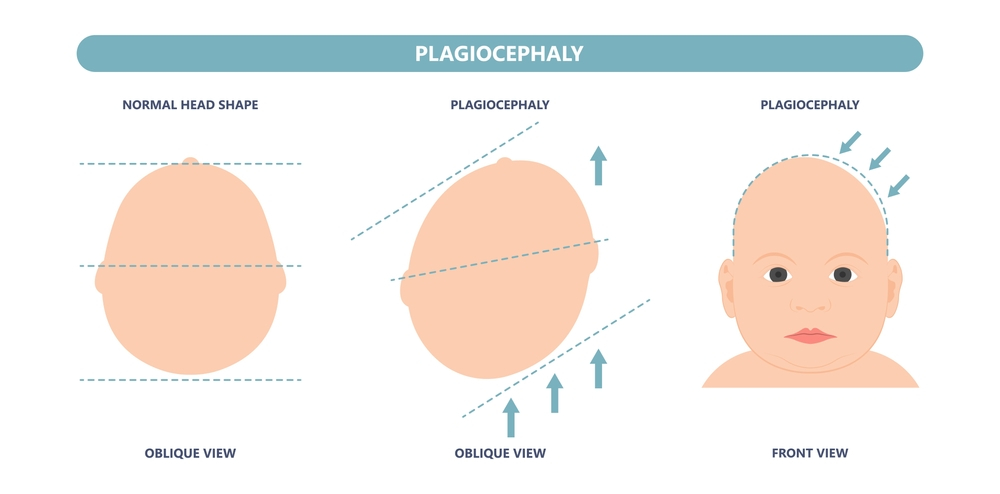Have you ever wondered why do babies wear helmets? It’s likely that this helmet is being used to help with positional Plagiocephaly, or flat head syndrome.
This condition is quite common in newborns and can happen when the infant spends long periods of time lying in the same position.
Let’s explore why babies wear helmets and how these devices can help.
Why do babies wear helmets? – Intro to positional Plagiocephaly?
Positional Plagiocephaly occurs when an infant’s head takes on a flattened shape from spending long periods of time in the same position, such as when they sleep or sit upright.

This condition is most common in babies younger than six months old because their skulls are still soft and malleable due to incomplete skull growth.
As the child grows older, the skull will naturally grow into a more rounded shape.
However, if left untreated, positional Plagiocephaly can cause facial asymmetry, difficulty hearing properly due to pressure on the ear canals, and developmental delays due to lack of stimulation from not being able to move freely.
To prevent these complications from occurring, doctors may recommend that babies wear helmets in order to reshape their heads into a more rounded shape.
How helmets help babies with flat head syndrome
Helmets for positional Plagiocephaly work by gently pushing against the flattened areas of the head so that it gradually begins to round out into a more natural shape over time.
These helmets must be custom-made for each infant in order to fit correctly and provide maximum support while also allowing adequate room for growth.
The helmet should be worn at least 23 hours a day until a desired outcome is achieved; this process usually takes several months but varies depending on individual cases.
During this period, parents should make sure to monitor their infant’s progress closely with periodic checkups with their doctor or physical therapist.
Helmets are often used as an effective treatment option for babies suffering from positional Plagiocephaly.
The helmets give gentle pressure against their heads so that they re-shape into a more natural roundness over time.
They also help with normal growth of the skull bones as well as development of motor skills and sensory processing abilities through unrestricted movement.
For parents whose infants have been diagnosed with flat head syndrome, using a helmet can be an effective way to ensure that their child reaches all necessary milestones without any lasting effects from their condition.


